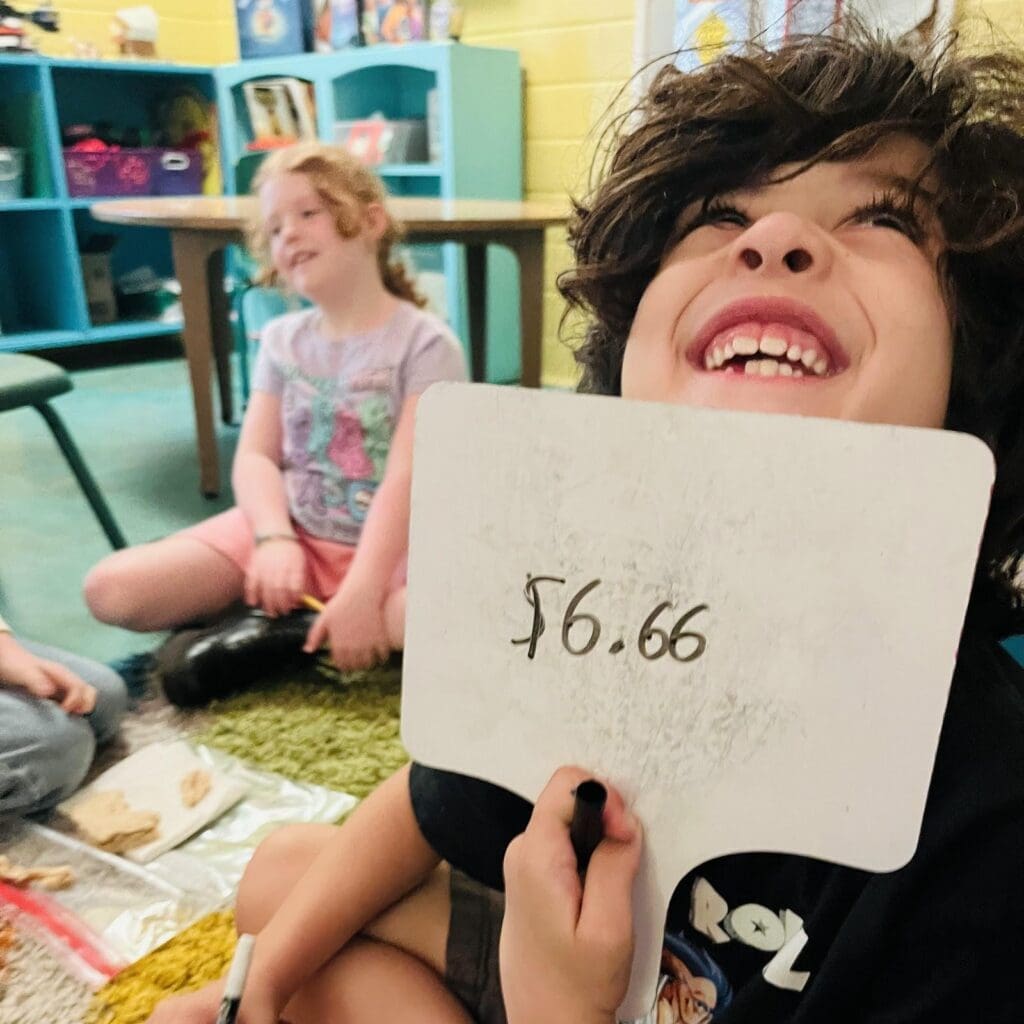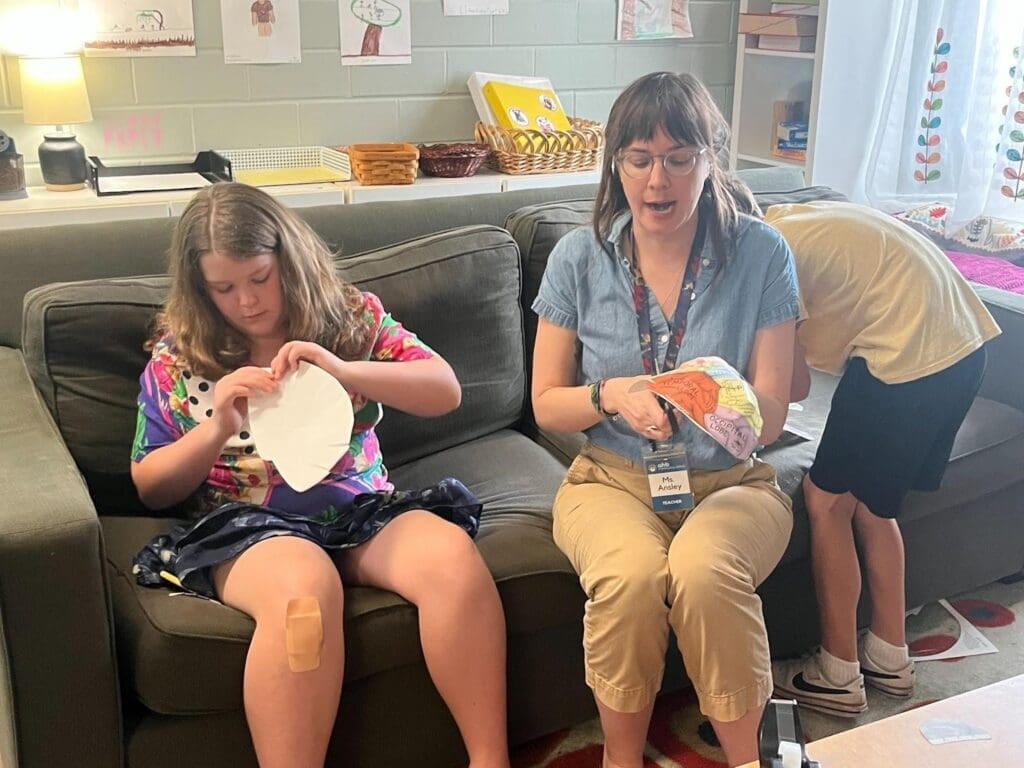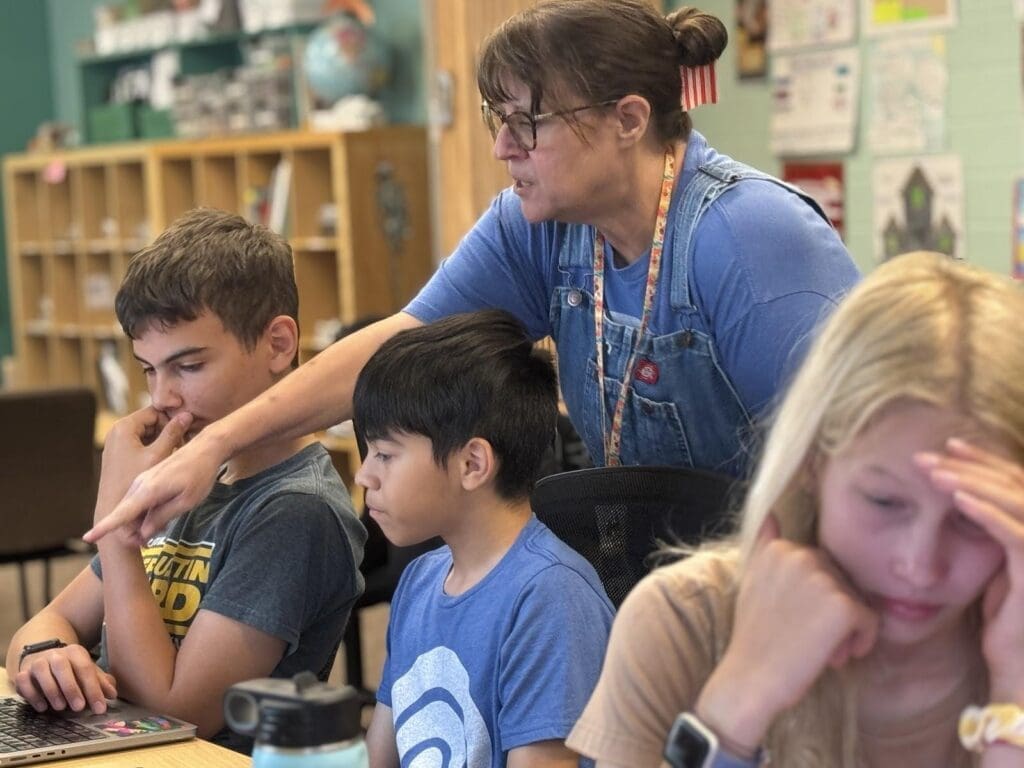Math:
This week the Marionettes had lessons over exponents and operation properties. We also spent time practicing solving order of operations problems like a dorito.
The Saplings jumped into surface area. They learned how to identify 3D shapes by their nets and how to find the surface area of prisms.
The Vroomshrooms entered their polynomial unit. They can now identify types of polynomials, add and subtract polynomials, and multiply monomials by binomials and trinomials.
ELA:
On Monday we learned about prepositional phrases with a fun game called “Where’s the Bunny??” Students found the bunny on the globe, under the couch, next to the printer, and so on. The rest of class time everyone put the finishing touches on their projects from our previous books, In the Reign of Terror and Around the World in Eighty Days.
Tuesday the students started off by contemplating the qualities of a good leader and writing those in their ELA journal. After discussing those thoughts, we opened surprise boxes of the new novel we’ll be studying for the rest of Q3: Animal Farm by George Orwell. This book ties in with our current theme–the Russian Revolution. On that very rainy day, it was lovely to sit together in the library and read the first chapter together. After that we filled out a character chart to help us visualize what’s unfolding in the novel.
Students were asked to read chapter two at home, and they returned to school Wednesday chattering about the book’s events! After a quick quiz to check for understanding and make predictions, we circled back to the song old Major taught the animals called “Beasts of England.”
We identified the rhyme scheme, the poet’s voice and audience, a few new vocabulary words, and most importantly–the whole point of the poem. Students were quick to figure out it’s a call to action, specifically rebellion! In the eighth grade, students also examined a modern day song/call for revolution by looking at the lyrics to Rage Against the Machine’s “Know Your Enemy.”
We ended our week in ELA by writing out on posters the animals’ “7 Commandments” using just our index and middle fingers because we wanted to simulate the pigs who wrote it. Finally everyone worked together to paint the posters.
Theme:
Zdravstvujtye! Hello! Theme students transitioned from the French Revolution to the Russian Revolution this week, and completed some fun activities to do so. We began the week with a map exercise to demonstrate the sheer size of the Russian empire at the dawn of the revolution. Students mapped the actions and locations of the revolution and practiced map analysis.
Along with the geography, students look at how the land affected the growth of Russian culture. They tested the differences between how grains are grown in warmer and colder climates with wheat and rye breads, completing a sensory activity and then enjoying a taste of each.
Students then look at Russian culture and how it is reflected in folk art and literature. They read selected Russian Folktales, looking for the morales of the stories, and symbols they could use to represent them. Students created Khokholma spoons, a popular form of folk art from the southern Volga region of Russia. They painted their symbols on the spoons, and glossed them from permanence. The results were stunning!
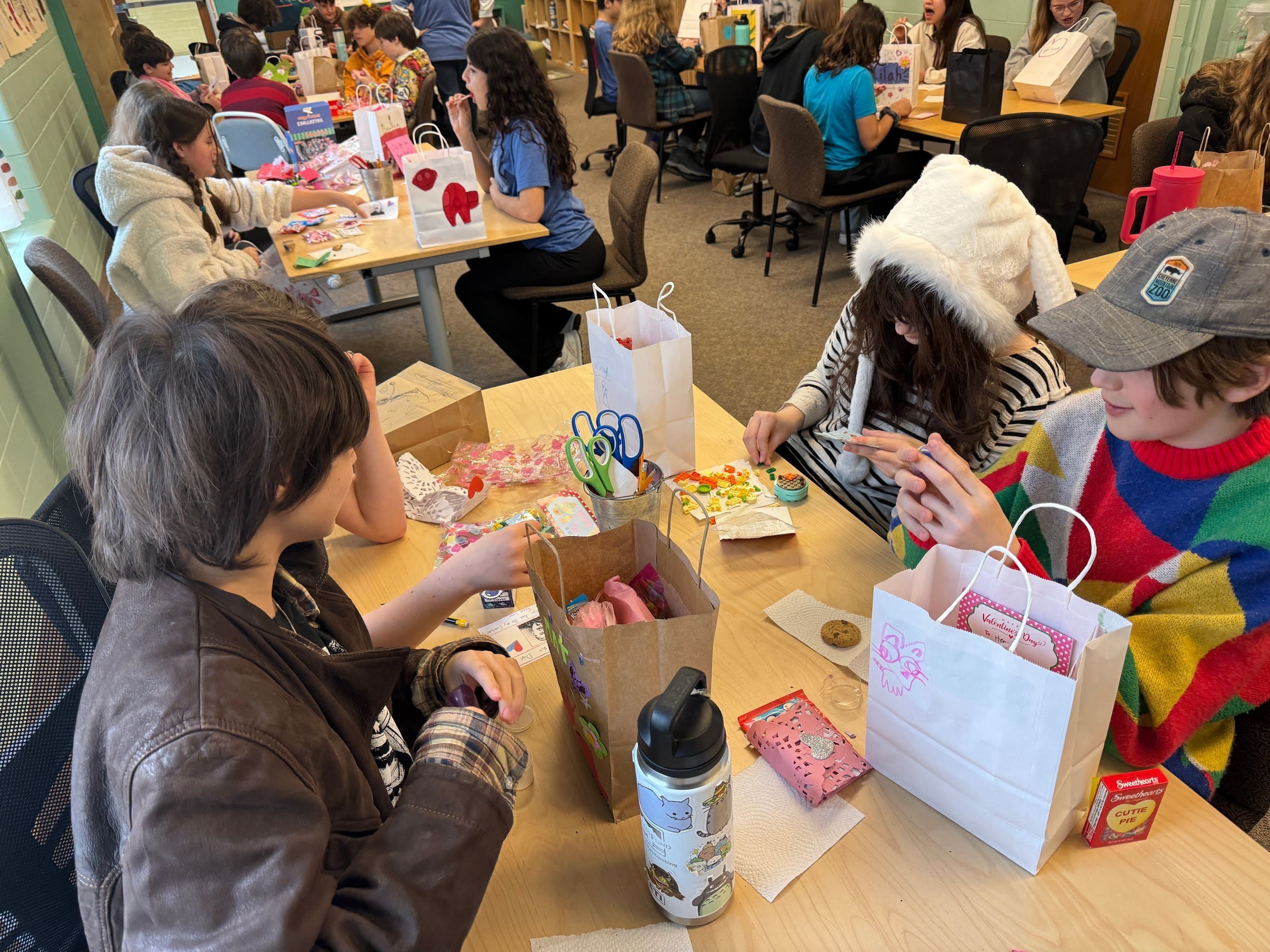

At top, Delta students enjoy their treats while celebrating Friendship Day this week. Above, Friday students used spaghetti noodles and glue to test how much weight a bridge could hold.
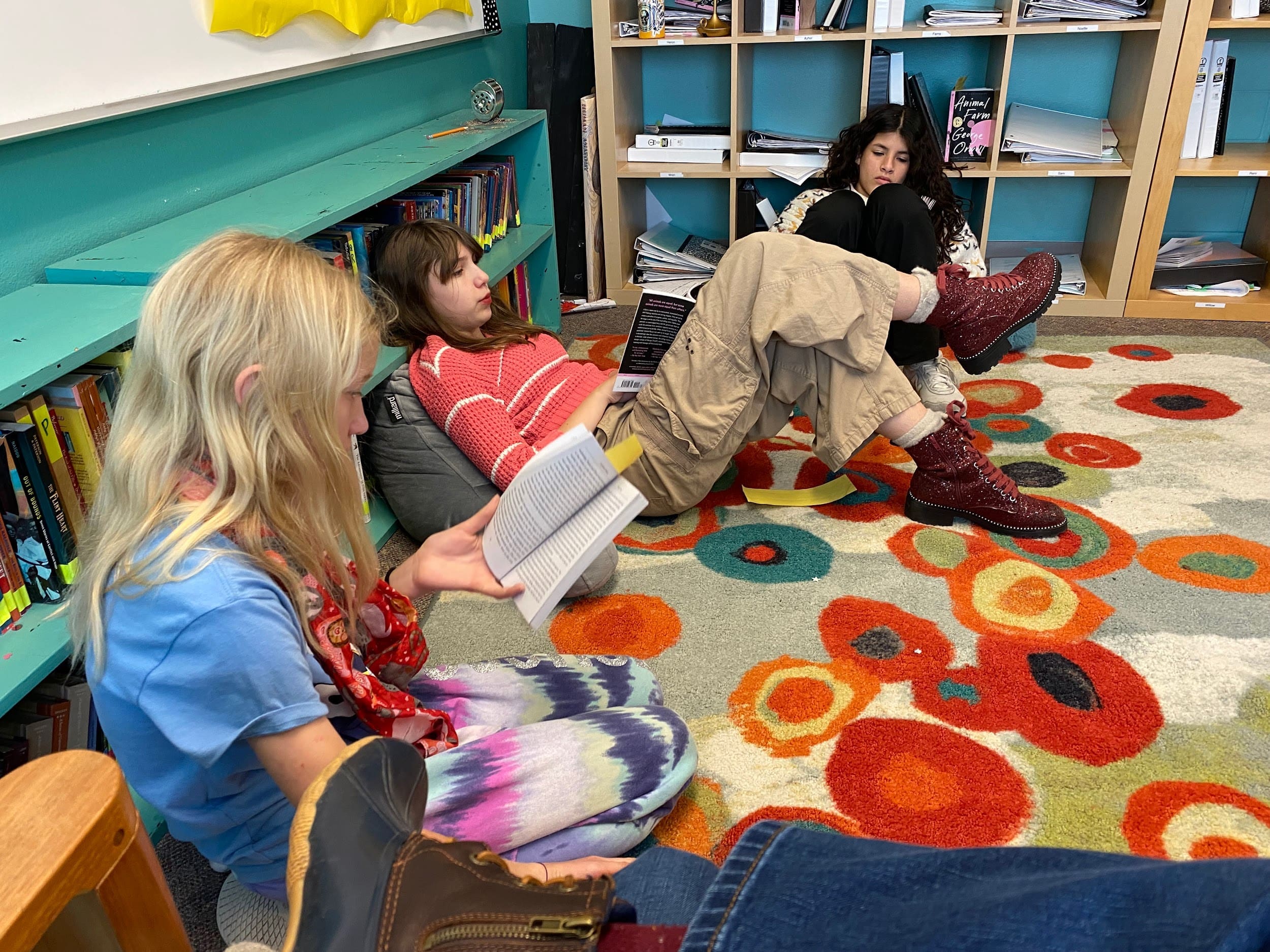
Top: Vroomshrooms work in “committees” to add final details to their on-going globe project. Bottom: Saplings cozy up in the library to read Animal Farm together.



Top left, Saplings write in their journals. At top right, Saplings write with “pig knuckles”. Above, Marionettes cut out hands to see how tall Boxer, the workhorse, is.


Students create The 7 Commandments from Animal Farm.


At top, Sapling students share a laugh as they work on quarter projects focused on revolutionary events, people, places, and things. Above, Marionette students read Russian folktales to find symbols for a Russian art project.



Theme classes focused on starting their investigation of the Russian Revolution this week. Students learned about how Russian geography influenced the events prior to the era, and how Russian folk art, including examples like Khokhloma Spoons, being prepared above, reflected the unique culture of Russia.



To kick off our second Theme topic, the Russian Revolution, students looked at how the geography of Russia played a part in creating the conflicts that led to the struggle. They tested the difference between wheat grown in warmer climates, like the midwest in America, and those grains grown in Russia. They tasted wheat and rye bread as an investigation.


